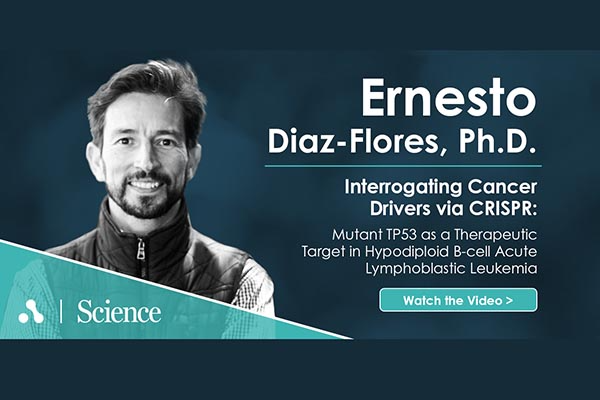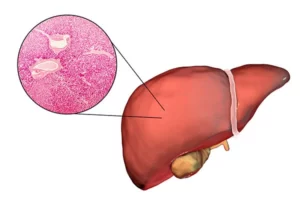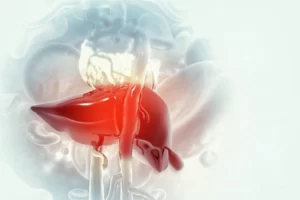On January 25, 2022, Ernesto Diaz-Flores, Assistant Professor of Pediatrics and Oncology Department at the University of California San Francisco (UCSF), presented a webinar entitled “Interrogating cancer drivers via CRISPR: Mutant TP53 as a therapeutic target in hypodiploid B-cell acute lymphoblastic leukemia”, hosted by Science/AAAS and sponsored by LevitasBio.

Dr Diaz-Flores studies high-risk leukemia. In his webinar he discussed one aspect of his research, focused on understanding the role of mutant p53 in acute leukemia.
Acute lymphoblastic leukemia (ALL) is the most common cancer type in children and is usually responsive to treatment. However, a subtype of ALL, called hypodiploid B-cell ALL, is associated with much poorer prognosis. Patients with hypodiploid B-cell ALL respond poorly to even the most aggressive chemotherapy and hematopoietic stem-cell transplantation, highlighting an immense need for the identification of new treatment strategies.(1) Dr. Diaz-Flores’ research aims to address this need.
Hypodiploid B-cell ALL represents about 2% to 4% of pediatric ALL. In hypodiploid B-cell ALL, leukemic cells contain 45 or fewer chromosomes, with the worst prognoses associated with the lowest chromosome counts (below 39 chromosomes, called low-hypodiploid or near-haploid ALL). A majority of patients with low-hypodiploid ALL have mutations in P53 at diagnosis and evidence of dysregulated genes linked to p53 (2).
To study the role of p53 in ALL, Dr. Diaz-Flores set out to use the CRISPR/Cas9 system to create isogenic hypodiploid cell lines containing wild type p53 or mutant versions of the protein. The first step was to knock out p53 from hypodiploid cell lines. Hypodiploid cells, however, have proven to be very difficult to transduce. To address this hurdle, Dr. Diaz-Flores’ group optimized every step of the CRISPR workflow from plasmid selection to transfection to lentivirus production to primary cell transduction to selection of transduced cells.
The LeviCell system became an integral part of the final optimized workflow, used to enrich for highly viable primary cells before transduction. A very high mortality rate was observed when culturing primary cells from patients. Collecting live cells using conventional FACS or bead approaches introduced additional cell death or significantly lowered yield, respectively. Thus, Dr. Diaz-Flores harnessed the LeviCell system as a gentle and rapid (five minutes) method to collect live cells from culture. He reported that the cells were so highly viable, his group has been able to successfully engraft mice injecting only 100,000 cells, a 10- to 20-fold lower amount than is normally used.
By leveraging viable primary cells enriched with the LeviCell system, Dr. Diaz-Flores’ group was able to achieve transduction efficiencies up to 95%.
Armed with their newly optimized CRISPR workflow, Dr. Diaz-Flores’ team successfully knocked out p53 and is now moving on to characterizing isogenic cell lines and studying how mutant p53 affects drug sensitivity.
Watch the full webinar to learn more about all the strategies Dr. Diaz-Flores developed to optimize the CRISPR workflow and successfully transduce primary cells.
Learn more about how the LeviCell system can be utilized in CRISPR research.







